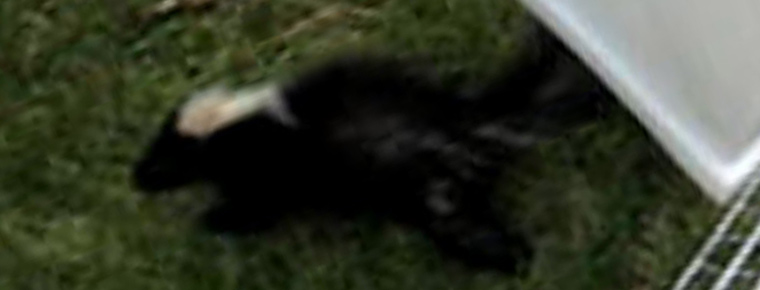-
info@aaanimalcontrol.com
Call us for help in your town
Humane Wildlife Education
A Skunk's Natural Diet and How It Obtains Food
Need skunk removal in your hometown? We service over 500 USA locations! Click here to hire us in your town and check prices - updated for year 2020.
Skunks are animals that are naturally omnivorous, and while vegetable matter is likely to make up a large proportion of the diet of most skunks, this certainly isn't the only aspect of their diet. The natural digestive system of the skunk is very flexible, and can adapt to a wide range of different food sources, and this means that the skunks have proved to be a very successful species, spreading across much of North America. While some animals in urban areas may have become a problem because of their ability to adapt to living from the leavings of humans, they have certainly thrived in such environments too.

Fruits, Vegetables And Plant Matter
This will usually make up around eighty per cent of a skunk's diet, although again this will largely depend on what food sources are available in the animal's habitat. Natural food sources such as berries, nuts and small plants are among the animal's diet, while it can also survive eating grass, leaves and even roots in some cases.
Small Animals And Insects
Skunks are also able to eat all kind of small animals, and these can include everything from lizards frogs and insects through to small birds, mice and moles. Skunks are also able to eat any eggs that they can find, while they are also able to eat carrion and will remove the meat from carcasses that other animals have killed.
Scavenging And Hunting Techniques
The skunk isn't particularly energetic when it comes to finding their food, and will usually expel as little effort as possible, but one of their favorite techniques is to dig a cone shaped hole in a lawn or grassy area, and then eat the grubs and worms that emerge. Skunks are crepuscular, which means that they usually are active around dawn and dusk, although in the winter they can go into a semi hibernation where very little energy is used.
How Skunks Eat Bees
Skunks have particularly thick fur which helps to protect them from the stings of animals such as bees, and they have a very clever technique that is usually passed from the mother to her kits. When a skunk discover a beehive, it will scratch at the entrance to the beehive, and as the guard bees come out in ones and twos to investigate the noise, it will eat them before they have a chance to fly away.
For more information, you may want to click on one of these guides that I wrote:
How much does skunk removal cost? - get the lowdown on prices.
How to get rid of skunks - my main skunk removal info guide.


















